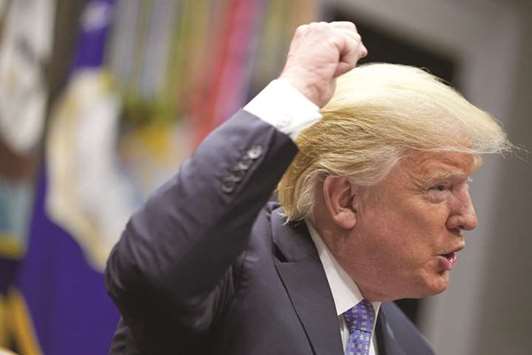The US and China imposed fresh tariffs on each other’s goods in the middle of trade talks aimed at averting the worsening conflict between the world’s two biggest economies.
Both nations started levying the previously announced taxes on $16bn of imports from the other country shortly after noon Beijing time. China also said it would lodge a complaint about the new American tariffs to the World Trade Organization, according to a Chinese Ministry of Commerce statement on its website.
The US will collect an additional 25% in duties on Chinese imports ranging from motorcycles to steam turbines and railway cars, and the Chinese retaliation will see a similarly sized tax on items including coal, medical instruments, waste products, cars and buses.
US Treasury Undersecretary for International Affairs David Malpass and Chinese Vice Commerce Minister Wang Shouwen met on Wednesday and was set to meet again yesterday for the first face-to-face trade discussions since June. Those talks weren’t expected to draw in senior decision-makers and are predicted only to result in a joint statement of productive discussions, according to a person familiar with the agenda.
“US trade tensions with China are more likely to worsen this year, weighing on global growth in 2019,” according to a research report from analysts at Moody’s Investors Service. “Most of the impact of the trade restrictions on economic growth will be felt in 2019,” and any additional tariffs would be a “material downside scenario,” they wrote.
President Donald Trump himself has played down expectations in recent days. That, analysts say, is partly because Trump and China hawks in his administration are feeling increasingly emboldened since the two sides held talks in May and June.
At home, Trump has watched the subdued reaction of financial markets to his trade manoeuvres and hailed recent strong economic news and polls showing his approval rating holding up among Republicans. Meanwhile, in China the economy has shown signs of weakness in recent months – a circumstance Trump has said gives the US an advantage.
“Here we are three months later and if anything during that time the hawk’s position has been consolidated because we drove over the cliff and discovered our car can fly with the US economy still doing fairly well and President Trump still popular among Republicans,” said Scott Kennedy, an expert on US-China relations at the Center for Strategic and International Studies in Washington.
The Chinese state-run tabloid Global Times said in an editorial late Wednesday that the Chinese delegation shouldn’t feel too much pressure over the outcome of talks. “To be honest, the Chinese society has no expectation that China and the US can quickly reach a deal to end the trade war,” it said, adding that China was ready to endure the fallout from protracted trade tensions.
The meetings this week in Washington appear set to highlight the continuing divide inside the Trump administration over how best to deal with Beijing and how China hawks are winning that battle. While Treasury Secretary Steven Mnuchin is eager to find a negotiated solution, other cabinet members such as US Trade Representative Robert Lighthizer are keen to continue increasing the pressure on Beijing, analysts say.
The Treasury Department didn’t respond to an e-mailed request for comment.
Trump recently revived a point of friction by accusing Beijing of manipulating its currency to offset the impact of his tariffs. In response, the Chinese delegation could this week offer a private pledge not to let the currency weaken further as long as negotiations continue, said Derek Scissors, a China expert at the American Enterprise Institute in Washington. Such a commitment might lead to further discussions.
US Treasury officials have been working on a revised list of American demands in the lead-up to this week’s meetings, according to people familiar with the US preparations. That effort, however, has been resisted by other parts of the Trump administration and it is unclear whether they will be ready to be presented to the visiting Chinese delegation.
The initial list of US demands presented to China in May included a call for a $200bn reduction in America’s annual goods trade deficit with China by 2020 – which stood at about $375bn last year – and an end to industrial policies that the US claims violates global trading rules.

US President Donald Trump speaks during a roundtable discussion on the Foreign Investment Risk Review Modernisation Act in the White House yesterday. The US and China imposed fresh tariffs on each other’s goods in the middle of trade talks aimed at averting the worsening conflict between the world’s two biggest economies.


